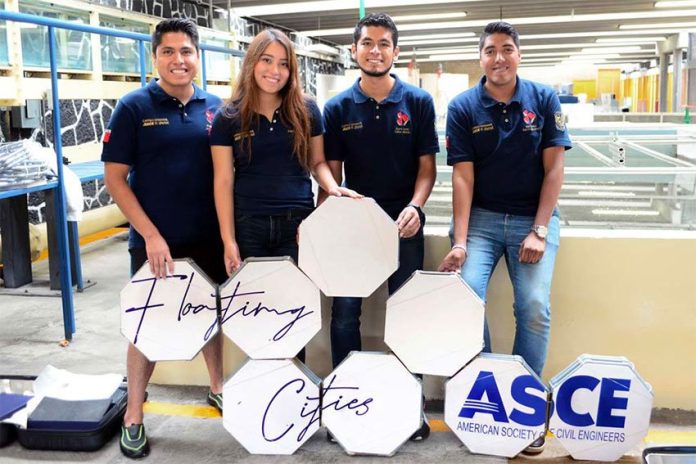Four students from the engineering school at the National Autonomous University (UNAM) have won the Blue Sky Competition Contest held by the American Society of Civil Engineers (ASCE).
The team of four UNAM engineering students won the contest with a proposal for a sustainable floating city built in the middle of the ocean.
The team advanced to the finals after coming in first place in the Texas-Mexico section. In the finals, they faced eight rivals, including teams from Bradley University in Illinois, the University of Michigan and the University of Puerto Rico.
One of the students said he had high hopes when he traveled to Melbourne, Florida, for the contest. But winning first place was still hard to imagine.
“It’s amazing that we are the first Mexican university to win the competition,” Juan Carlos García told the university’s newspaper, Gaceta UNAM. “We’re proud to represent the engineering school and UNAM.”
The team designed an octagonal floating city that could be built in the middle of the ocean and have sustainable energy, food production, water purification and recycling systems. Then they built a 1:2500 scale model for the city, which they tested in a UNAM hydraulics lab.
“With that model, we got a clear idea of how it behaves, and we could respond to the judges’ questions,” said Jesús Márquez, one of the team members.
The proposals are judged for written work, oral presentation and marketing.
“One of the judges gave us his card, and said that if we want to do a doctorate in the United States he would support us,” said team member Carlos Alberto Ibarra Cantú. “It feels good when Mexican engineering is valued outside the country. Now we’ll need to take advantage of these opportunities and keep working.”
The prize for the contest, which brought civil engineering students from all over the world, consists of a trophy and a cash award, which the students said they will use for a project to design concrete canoes.
The national concrete canoe competition is another event held by the Society of Civil Engineers. It takes place in June next year.
Source: El Financiero (sp), Gaceta UNAM (sp)
